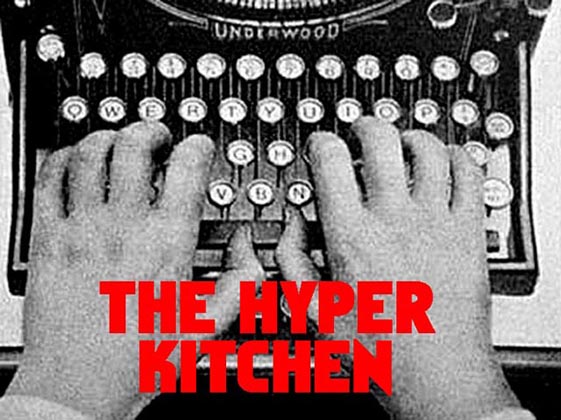
Everyone is driven by different dreams. Some crave conquest (whether in the boardroom, bedroom, or battlefield), and others have devoted themselves to intellectual pursuits. Those who are more romantic yearn to discover true love, while others covet fame and celebrity status. There are also those miserly people whose sole pursuit is wealth.
And then there are those who have resolved to eat more in their lifetime than some Eastern European nations. Of these gourmands, none can rival the passion for food that was possessed by millionaire James Buchanan "Diamond Jim" Brady.
Brady was an enormously successful railroad businessman from the "Gilded Age" of the late 1800's. His nickname was derived from his copious gaudy rings and jewelry, estimated to have been worth around fifty million dollars (adjusted). Asserting that it was only proper for a millionaire to look the part, Brady sunk further millions into custom tailored suits, silk hats, and other finery. In 1895, Brady was the first man in New York City to own an automobile, although he was more frequently seen parading about on one of his twelve gold-plated bicycles. In short, the guy was mind-bogglingly wealthy.
Despite his procurement of such costly items, Brady's principle expense were the lavish meals that he ordered at Charles Rector's Broadway restaurant. Rector once said that Brady was "the best twenty-five customers that [he] ever had." He wasn't joking either.
A typical "Brady Breakfast" consisted of eggs, steak, lamb-chops, hominy grits, homefries, pancakes, corn muffins and a gallon of orange juice. Afterwards he would tide himself over with thirty-six oysters and clams until lunchtime rolled around, during which he'd devour multiple crabs, lobsters, a joint of beef, and several pies. If he felt especially peckish in the afternoon hours, he'd polish off another platter of clams and oysters and that would hold up until dinner, a meal large enough for an entire platoon of Marines.
It consisted of twenty-six Lynnhaven oysters, six crabs, six lobsters, two slabs of turtle flesh, two bowls of green turtle soup, two ducks, a sirloin, a platter of steamed vegetables (gotta' eat your vegetables), an entire tray of pastries and two-pound box of chocolate.
I'll just let that sink in, before continuing.
Seemingly determined to embody the worst excesses of super-wealth while the poor died starving, Brady did not eat the aforementioned meals ever so often or even on a weekly basis, but rather
every day. How it was humanly possible to accomplish this feat of consumption is unknown. Furthermore, it is similarly unknown how Brady was able to get any work done what with his constant eating.
Being a millionaire permitted Brady to indulge in the highest quality foods. Upon hearing of new recipes from his high society friends, he would do whatever it took to sample the delicacy in question. While stuffing his face at Rector's Broadway restaurant, he overheard a discussion about the merits of
Filet de Sole de Marguery, a dish served only at the
Café Marguery of Paris. Its famed sauce was a guarded secret, known only to the head chef. Brady demanded that Charles Rector unlock the secrets of
Filet de Sole de Marguery, threatening to never again return to the restaurant. Terrified at the prospect of losing Brady's patronage, Rector forcible pulled his son George from his studies at Cornell to take part an in a bizarre mission of culinary espionage.
The hapless George Rector was sent to Paris to infiltrate the restaurant establishment. Under a pseudonym, he got a job as a dishwasher at the Café Marguery, displaying a calculated enthusiasm that ensured his gradual promotion. After two years of hard work, George had become an apprentice chef and earned the confidence of the culinary elite who operated the Café. Convinced of his skill, they brought him into the fold and taught the fabled secret sauce of the
Filet de Sole de Marguery.
The next day, George was on a ship bound for New York City, having memorized the recipe. Hearing the news of George's arrival, Brady was waiting for him on the docks. As the ship slowly made its way to shore, Brady screamed "Have you got the sauce?" into the sea-side air. The obese millionaire proceeded to race George Rector back to his father's restaurant. The
Filet de Sole de Marguery was served, and Brady ate nine portions. The Rectors waited nervously for the verdict as he dabbed up the last bit of sauce with a hunk of bread.
"If you poured some of the sauce over a Turkish towel, I believe I could eat all of it."
The corpulent bastard finally died at age sixty-one, donating much of his fortune to John Hopkins Hospital. In his honor, the then-recently established urology clinic was named after him.
Sources
Wallace, Irving and Wallechinsky, David. (1975)
. "Footnote People in American History."
The People's Almanac.90: pp.4-22. ISBN:0-385-04060-1
http://www.gourmandizer.com/ezine/brady/
 Here in the Hyper Kitchen, we value the capacity of monsters to spice things up. It's never a dull moment when your life is in mortal danger. We assert that the monsters have rocketed mankind to ever more dizzying heights of cultural excellence and we shall be celebrating them every month. So now, every lunar cycle we will present a new freakish creature from nature, mythology, folklore, film, literature, or urban legend.
Here in the Hyper Kitchen, we value the capacity of monsters to spice things up. It's never a dull moment when your life is in mortal danger. We assert that the monsters have rocketed mankind to ever more dizzying heights of cultural excellence and we shall be celebrating them every month. So now, every lunar cycle we will present a new freakish creature from nature, mythology, folklore, film, literature, or urban legend.


















